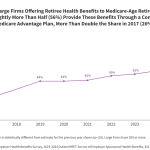
Syndax Pharmaceuticals Leukemia Drug Wins a First-in-Class FDA Approval
Approval of Syndax’s Revuforj for acute leukemia makes the twice-daily pill the first in a new class of drugs that block a cancer-driving protein called menin. Other companies developing menin inhibitors include Kura Oncology, Biomea Fusion, and Johnson & Johnson subsidiary Janssen. The post Syndax Pharmaceuticals Leukemia Drug Wins a First-in-Class FDA Approval appeared first…













